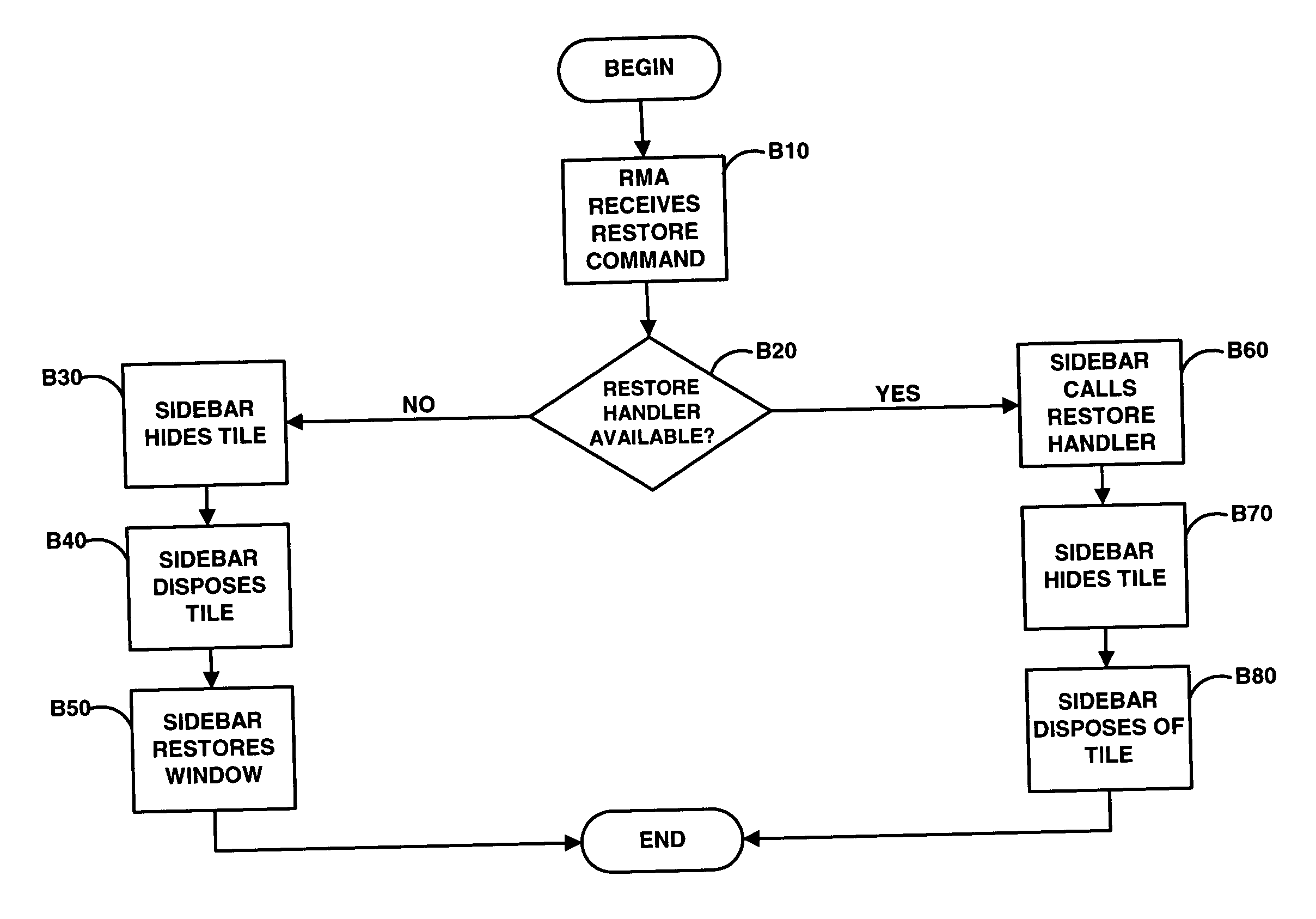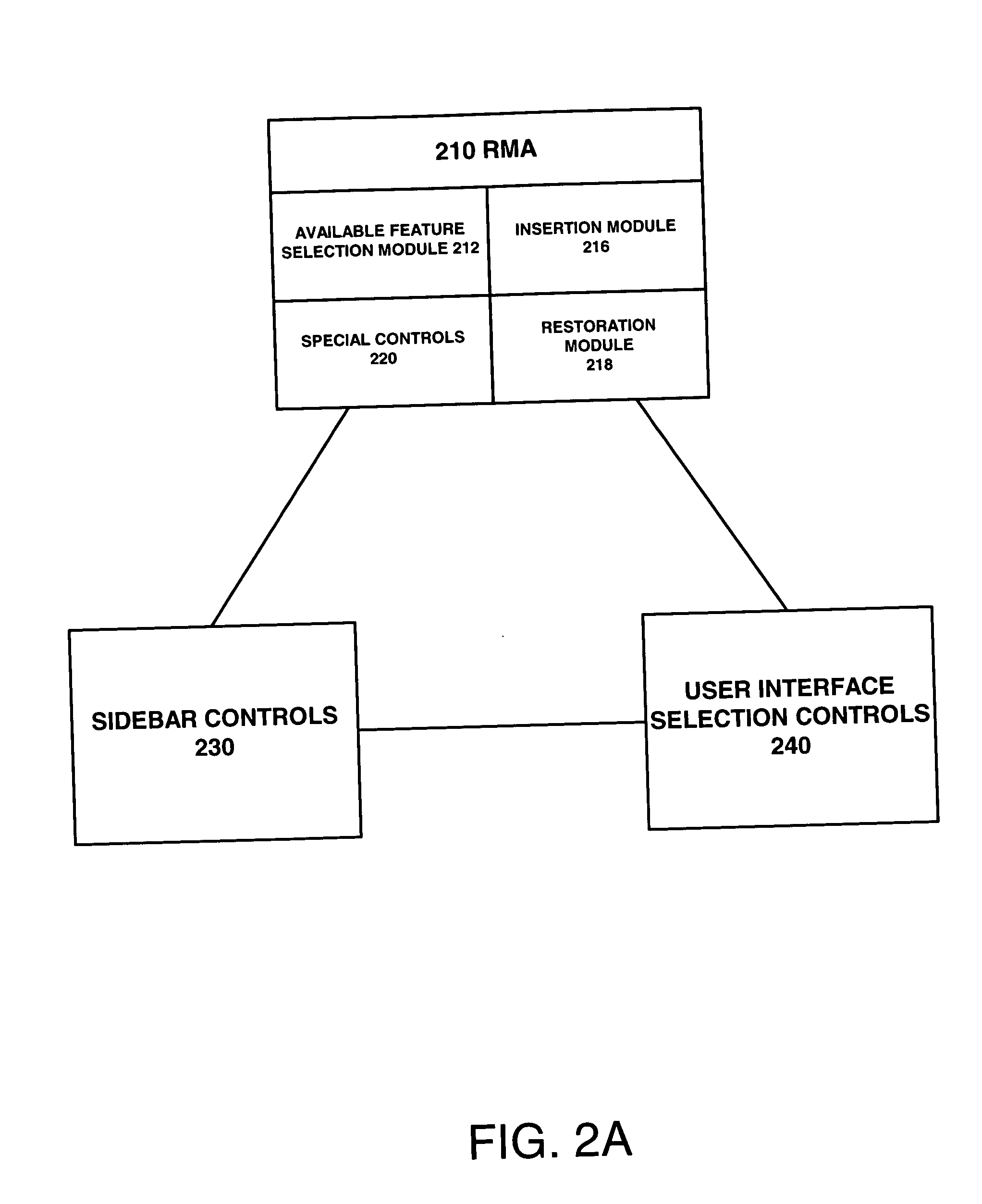In today's information saturated environments, such as
the Internet, a local or
remote computer network, or any combination of the Internet and such networks, it is often difficult for a user to track the potentially large quantities and varieties of interesting communications and information.
This problem becomes particularly acute where the communications and / or information are dynamic, such that rapid, numerous, or large changes to the communications status or channels, or in the information results in out of date communications and / or information that is often relatively useless to a user.
However, such schemes are typically limited by what types of communications or information can be tracked or displayed, by the manner in which the communications or information is accessed or otherwise provided to the user, or by the inability to facilitate sharing of the communications or information between users.
Further, conventional schemes that have attempted to address these problems tend to be limited by an inability to provide a single interface that allows for concurrent
information retrieval, display or access in combination with communications and communication access points in a dynamic integrated environment.
Consequently, users are often left with cluttered displays, which provide access or interaction with either particular types of communications, or with specific information, but not with both communications and
information access and interaction in an integrated environment.
However, such schemes typically provide large windows that take up substantial amounts of
screen space.
Consequently, particular information cannot be easily shared or communicated from within the applications provided by these schemes.
Further, such schemes become unwieldy as the amount of information tracked by a user increases, and as the number of communications contacts maintained by the user increases.
In particular, as the amount of information increases, the user is forced to scroll through large amounts of data or communications channels.
Unfortunately, with these schemes, the user cannot do both simultaneously.
Therefore, the user is unable to share data observed via the information tabs with contacts in the communications tab unless the user manually saves or copies the information, switches tabs, then manually creates a message to a particular contact, and either attaches or pastes the information to that message.
Further, because these conventional schemes tend to have numerous tabs, they require a fairly large window in order to display the information and associated controls or icons.
Unfortunately, such windows become buried under other application windows when the user is using other applications.
Consequently, the user is often forced to interrupt the flow of work to switch between windows.
While this scheme solves the problem of burying the messaging window, the messaging window then occludes a potentially large part of any other open application window.
While it is possible to manually resize the different application windows and to move them around the screen in an attempt to give each window its own space, such manual user intervention can be both
time consuming and aggravating for the typical user.
However, this scheme has several important limitations.
While this scheme provides for gathering and providing information to a user, it fails to provide the level of communications capabilities offered by messaging schemes.
For example, this scheme does not provide for initiating communication via an icon, so while an icon may provide a
communication status, such as a number of received messages, it does not provide for responding to such messages.
Further, this scheme does not provide for nesting or otherwise organizing groups of icons in order to aggregate multiple icons.
In other words, opening the window associated with one icon does not provide access to further levels of grouped icons.
Consequently, it is difficult to organize icons where a large number of icons are used.
In addition, the icons of this scheme are not easily transportable and no real mechanism exists for transferring icons between users.
Other limitations of this scheme include a lack of an ability to resize the window containing the scrollable strip used for displaying the icons.
Further, with this scheme, if a user adds too many items, another row or strip is automatically created within the window, even if that row has only one icon, thus resulting in a waste of valuable display space.
While useful, this scheme is more limited than the prior scheme for several reasons.
Thus, if the
information type and source are not listed as options, they are not available.
However, users are provided with limited control over certain information options, such as, for example, specific stock symbols for stock quotes, choosing areas or topics of news to generate an automatic alert, or choosing particular cities to generate a weather report.
Another limitation is that users are not able to add or edit information sources, such as by modifying the icons as described above.
Furthermore, since the ticker scrolls, there is no guarantee that all the information of interest will be visually available at any given time.
Consequently, this scheme can become very distracting as the user is forced to watch the display constantly.
Further, because the
scrolling ticker is in constant motion, it is in itself potentially very distracting to a user as it creates a persistent motion in the user's
peripheral vision.
Finally, the communications capability of this scheme is minimal in comparison to the aforementioned messaging schemes.
Consequently, while such schemes provide for
information retrieval and display, they do not provide for communications capability.
However, this scheme suffers from many of the same basic limitations described above with respect to the aforementioned schemes.
Such limitations include an inability to
nest or organize views and arrange for a plurality of views to be displayed simultaneously.
Also, as mentioned above, such schemes typically provide minimal communications or messaging capabilities.
In addition, the content of typical web pages is typically not designed to minimize the area in which information is displayed, resulting in an inefficient use of
screen space.
Finally, because the
web scraping technique is a patchwork of distinct elements, the composite web page resulting from this technique is typically an unappealing jumble of disparate elements that were never visually designed to appear together on a single page.
Conventional
user interface systems do not provide a solution that adequately addresses both of these needs, while also providing the user with flexibility, ease of use, and choice in configuration.
 Login to View More
Login to View More  Login to View More
Login to View More 


